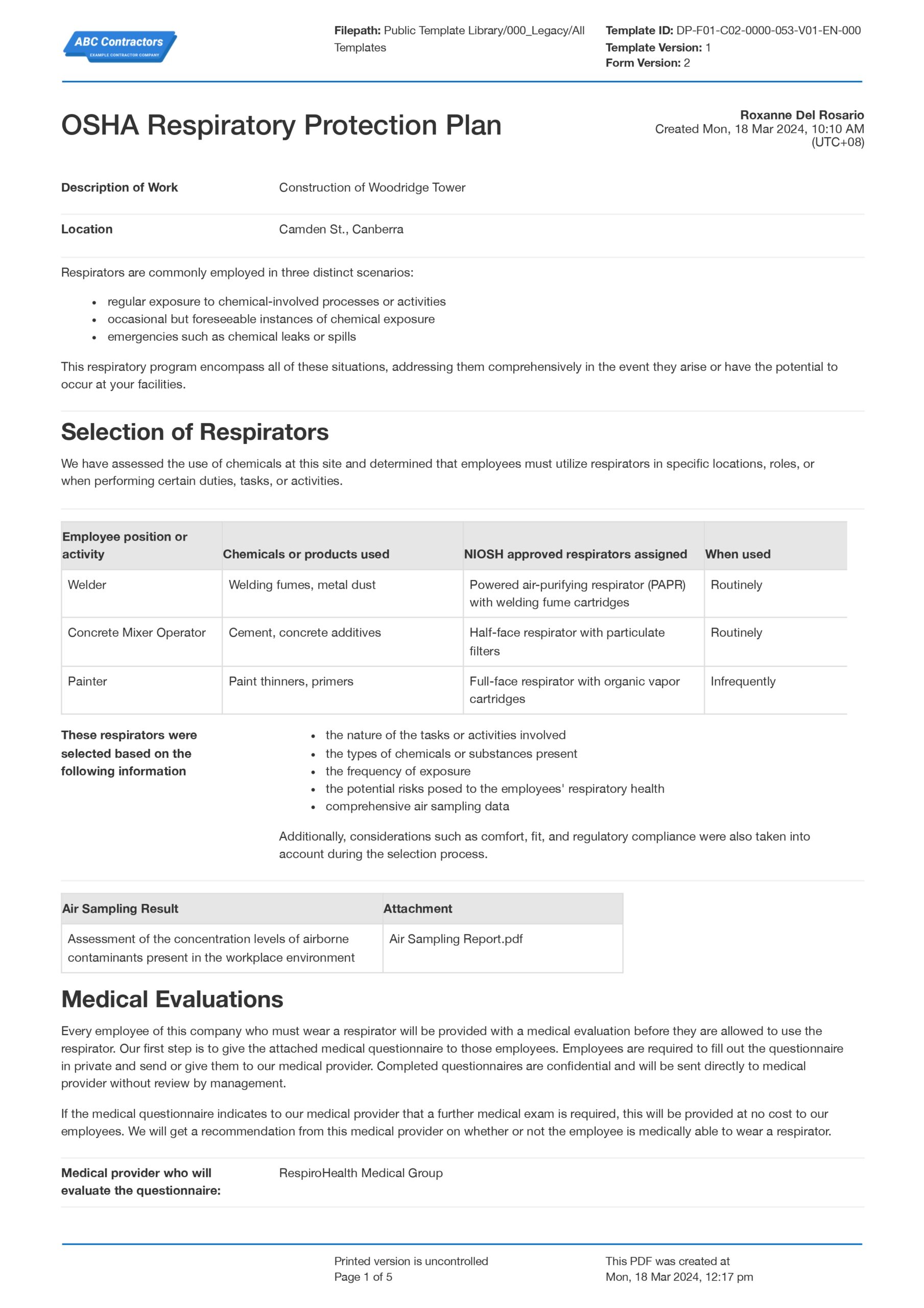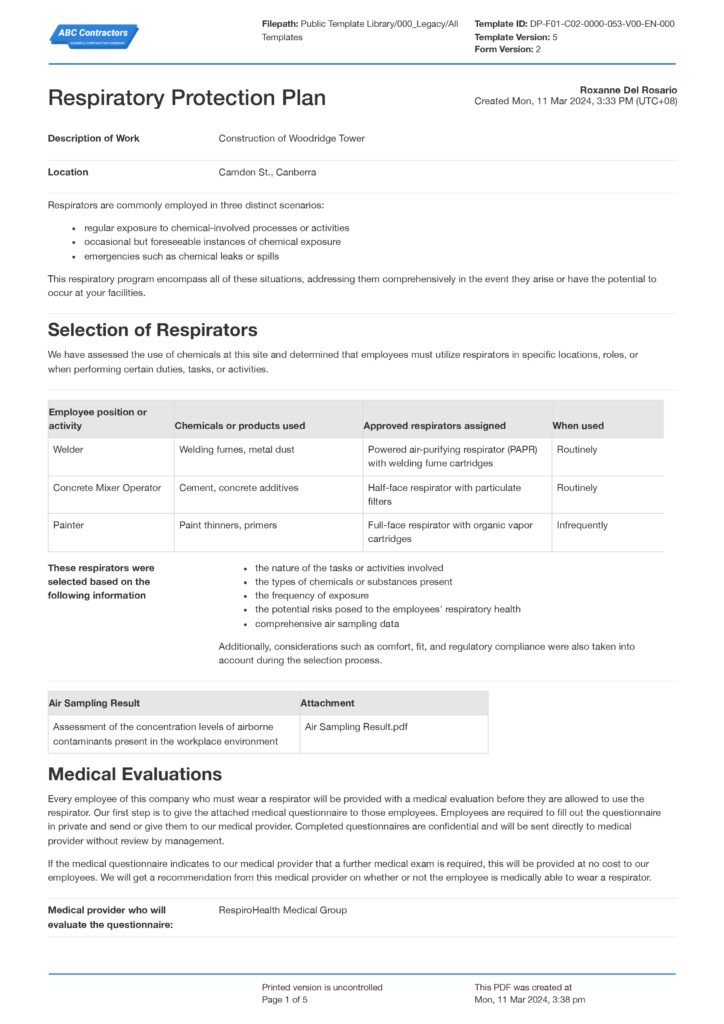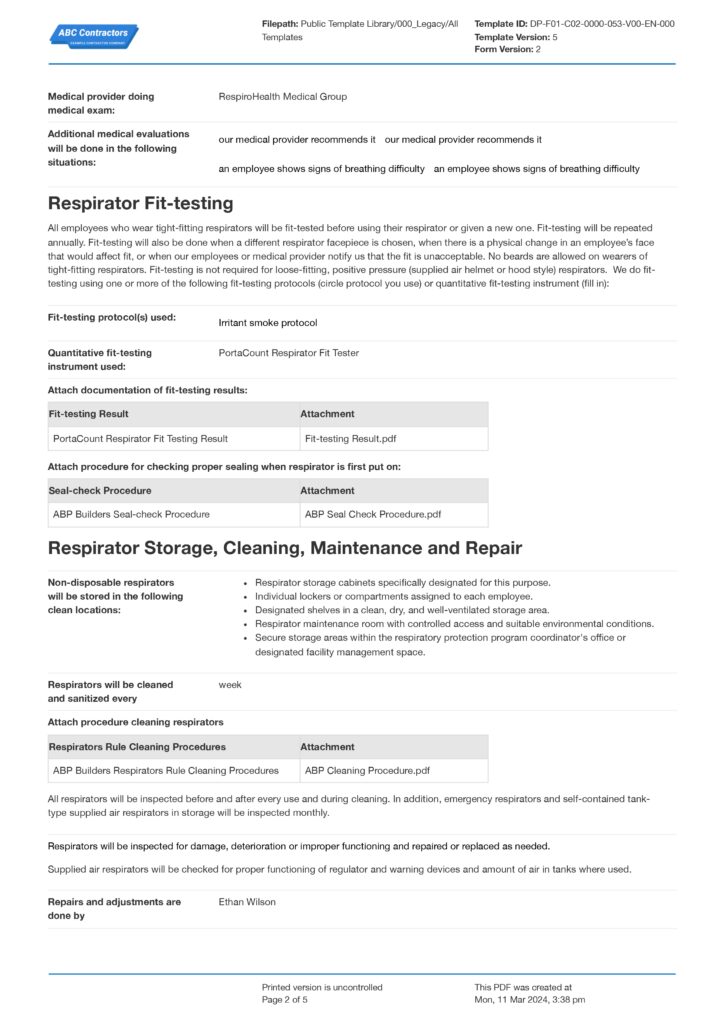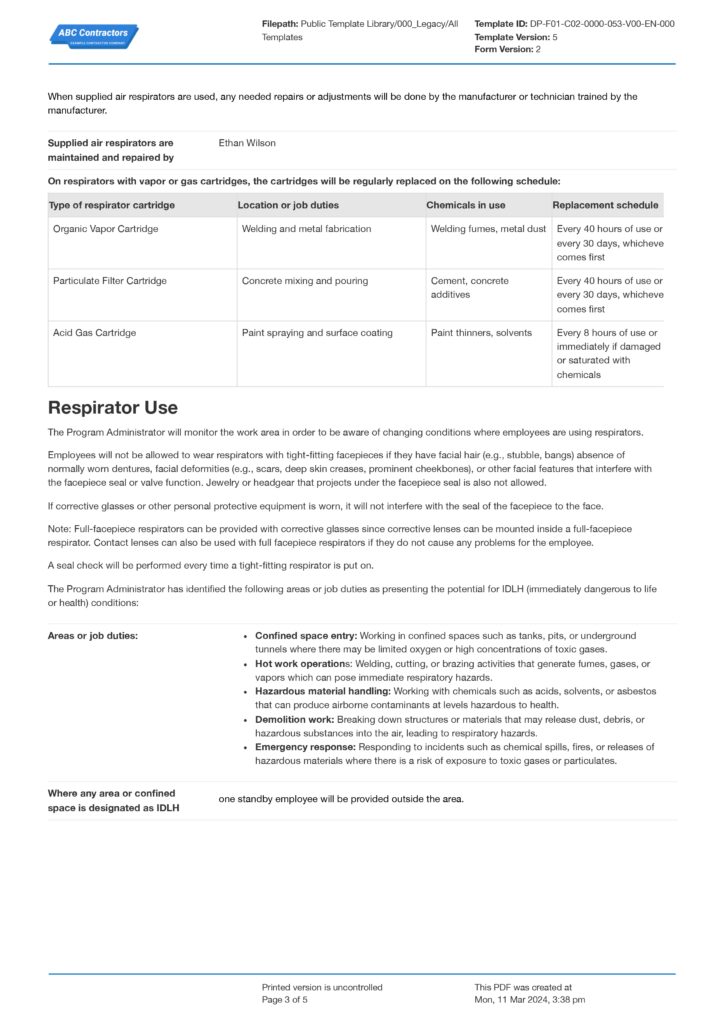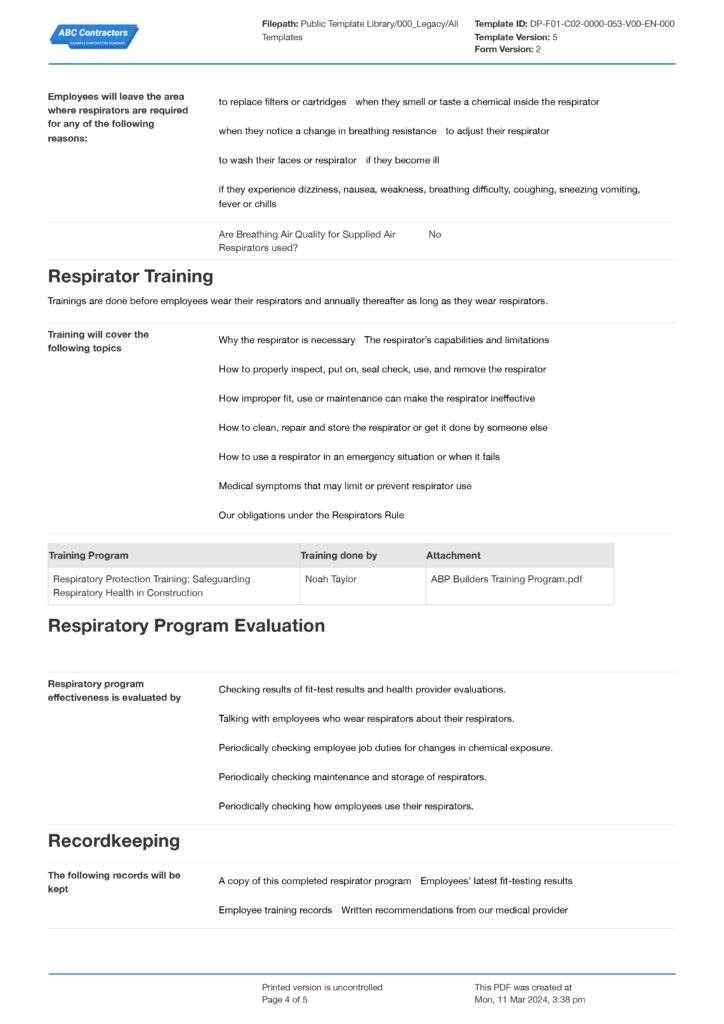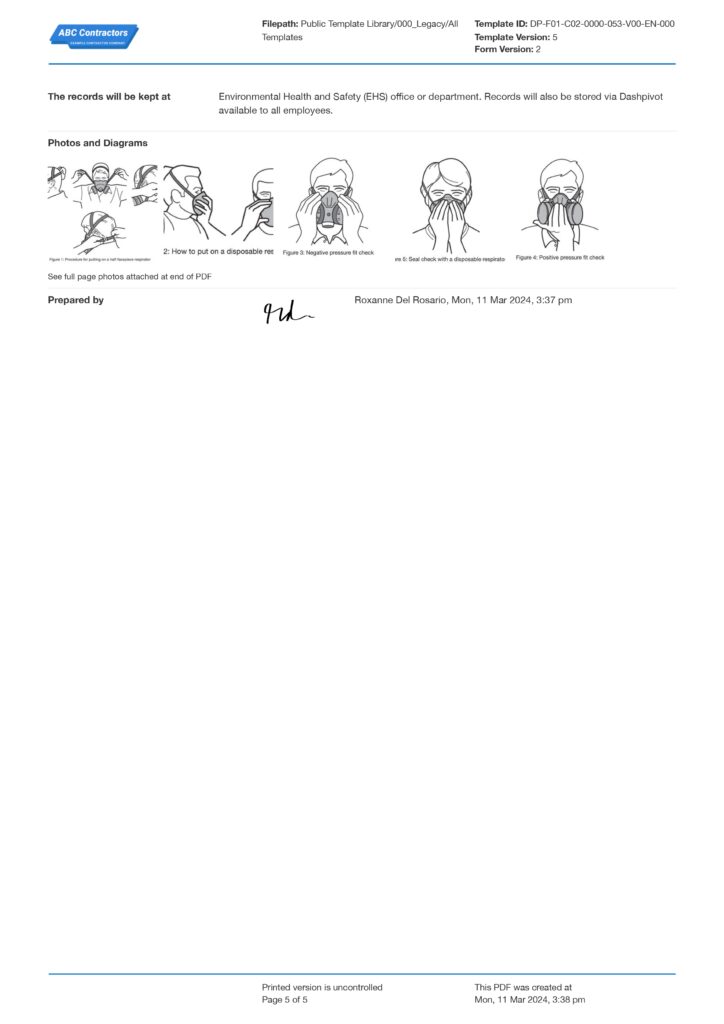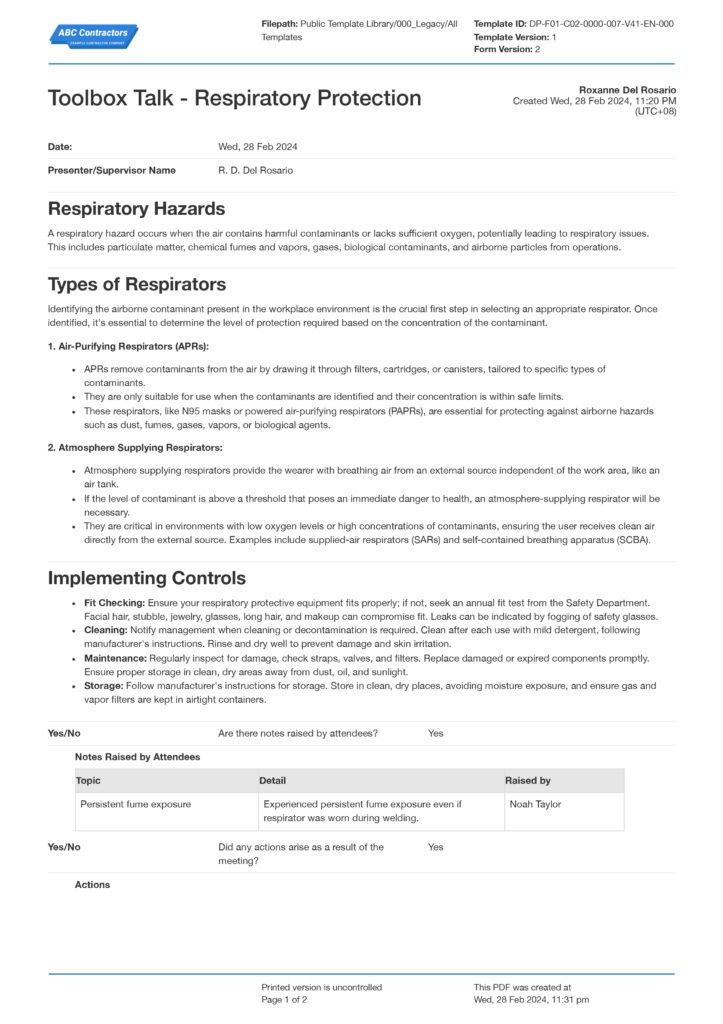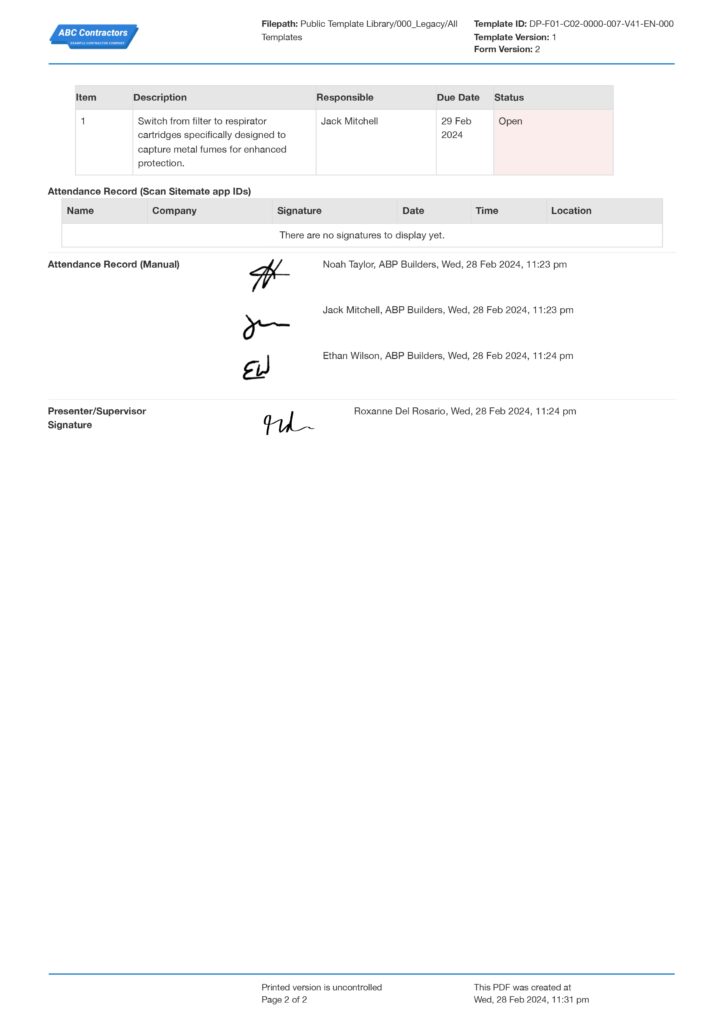Dashpivot Article – Respiratory Protection PPE
Respiratory Protection PPE
In this article we will help you understand different respiratory protection PPE and the factors to be considered when choosing the right PPE.

Respiratory Protection in the Industry
The risk of breathing in anything harmful to your lungs is always there, whether you are in an industrial facility, building site, mining area, or any other industry for that matter. Sometimes, substances such as asbestos, metal fumes, chlorine, phosgene, and others are necessary for production or construction, leaving your lungs vulnerable to their harmful effects.
Therefore, industries must ensure their employees receive appropriate respiratory protection when exposed to these substances.
Respiratory Protection PPE
In any industry, employees may occasionally come into contact with substances that can harm their lungs. But with the advancement of technology, we don't need to worry about inhaling these harmful substances anymore. The design of personal protective equipment now eliminates the risks of inhaling these substances. Here are some examples to help you understand the function and use of these respiratory devices.
Filtering Facepiece Piece Respirators
Filtering facepiece respirators, or commonly known as N95 respirators, are disposable respirators used to mitigate the inhalation of airborne particles. Workers in the general industry use respirators like these to reduce their exposure to dust, minuscule hair, and pollen. For a mask to be called a certified filtering facepiece respirator, it needs to be approved by the National Institute for Occupational Safety and Health (NIOSH), have two straps, and clearly show a letter (N, R, P) that tells how well it resists oil and its filtering efficiency (95, 99, 100).
Elastomeric Mask Respirators
Elastomeric mask respirators, also known as EHMRs, are a form of respirator that allows for the purification of air. These respirators are reusable and are equipped with interchangeable filter components, such as cartridges or filters, which may be chosen to offer the required degree of filtration. Rubber, either synthetic or natural, is used in the construction of the facepieces, which enables them to be cleaned, disinfected, stored, and reused several times.
When fitted with the necessary filters or cartridges, EHMRs have the capability of providing protection against gases, vapors, and particles simultaneously. To ensure that the facepiece of an EHMR is able to create a secure seal against the user's face, fit testing must be performed at least once a year.
Supplied-Air Respirators
Supplied-air respirators, which are sometimes referred to as airline respirators, are respirators that provide air (not oxygen) to a facepiece via a supply line that originates from a stationary source. Both positive-pressure and negative-pressure modes are available for use in SARs. Respirators like this are lightweight and may be used for extended periods of time without interruption in environments that are not immediately hazardous to one's life or health (also known as IDLH). A limitation of the SAR is that the length of the air supply line restricts the movement of the person wearing the respirator.
Powered Air-Purifying Respirators
PAPRs, which stand for powered air-purifying respirators, are respiratory protection equipment that is designed to supply the user with clean air. These respirators are powered by a battery, which is then used to power a blower that pumps clean air through a filter and into a mask, hood, or helmet. When compared to reusable respirators, PAPR offers very high levels of protection and makes breathing far more comfortable. On the other hand, PAPRs do not provide oxygen, and as a result, they cannot be used in environments that are either oxygen-deficient or otherwise immediately hazardous to life or health (IDLH).
Self-Contained Breathing Apparatus (SCBAs)
A self-contained breathing apparatus, often known as an SCBA, is a piece of equipment that is worn in order to supply breathable air in settings that are deficient in oxygen, with smoke, with toxic gasses, and with other airborne pollutants that may otherwise be hazardous to breathe. In most cases, workers who are in charge of handling hazardous products or who are working in polluted areas are obliged to wear a breathing device that fits inside of themselves. When entering atmospheres that are immediately hazardous to life and health (IDLH), it is advised that only positive-pressure self-contained breathing apparatuses (SCBAs) be used. In most cases, a self-contained breathing apparatus (SCBA) is comprised of a facemask that is equipped with a hose that is connected to an air source that is worn by the individual. Air may be generated from a variety of sources, including a tank of compressed air, compressed oxygen, or a chemical that generates oxygen.
Combination Respirators
Supplied-air/SCBA respirators and supplied-air/air-purifying respirators are both examples of combination respirators that may be used. SCBAs are able to be used in IDLH conditions and are equipped with a self-contained air supply in the event that the main airline fails. The air-purifying type cannot be used for IDLH situations since it provides protection via the use of both a supplied-air hose and an air-purifying component.
Breathing-in the Knowledge of Respiratory Protection
The different kinds of respirators have been discussed. The next step is to disseminate this knowledge, raising workplace awareness and enhancing the culture of safety.
The best avenue to share this knowledge is through toolbox talks. Toolbox talks are both an informal meeting and a forum. It is a meeting that targets safety topics, like the one being talked about here, and a forum that lets workers share their safety concerns and issues. These talks have been an effective tool to continuously solidify workplace safety.
However, to conduct a successful toolbox talk, it will require a toolbox talk form. The toolbox talk form lays out all the important safety topics for the talk and has fields where raised concerns and issues can be recorded. The raised issues and concerns recorded during the meeting will be investigated and formulated with solutions to further provide security to the employees and have them know that they are cared for by the company.
This bolsters employee morale and improves overall work performance. To know what a good toolbox talk form looks like, take a look at the example below.
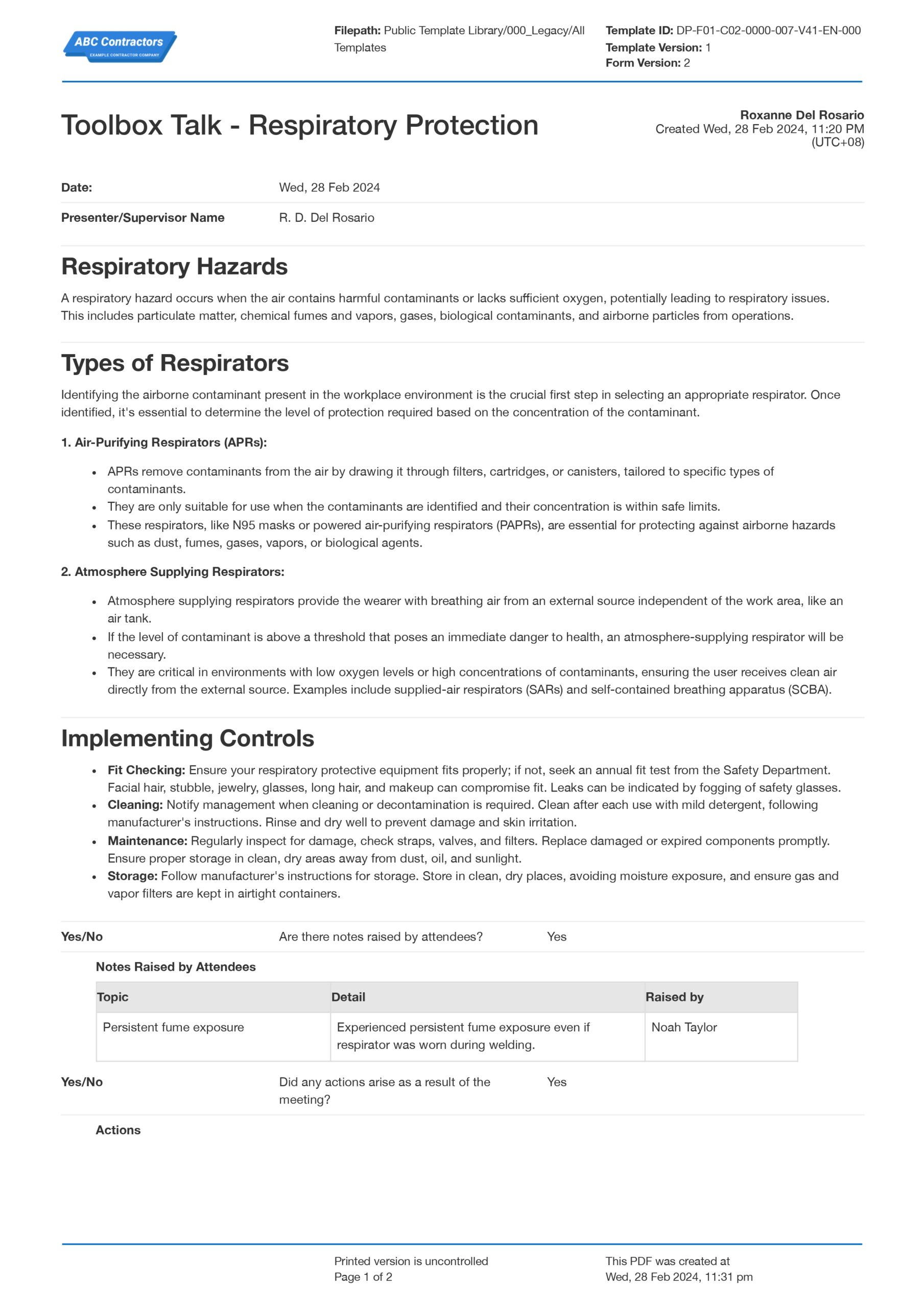
Use this Respiratory Protection PPE Safety Talk doc
Respiratory Protection Factors
The Occupational Safety and Health Administration (OSHA) has established protection factors in the use of respiratory protection.
They established the Assigned Protection Factor (APF), which denotes the workplace level of respiratory protection that a respirator or class of respirators is expected to provide to employees when the employer implements a continuing, effective respiratory protection program. Under the Respiratory Protection standard, APFs are used specifically in selecting proper equipment under section (d)(3), which addresses the selection of respiratory protection equipment for non-IDLH atmospheres.
Under paragraph (d)(3)(ii), employers must select respirators (using APFs as well) that are appropriate for the chemical state and physical form of the contaminant. You need different types of filters, cartridges, and canisters depending on whether dusts, fumes, mists, vapors, or gases are present in your workplace and depending on the kinds and concentrations of the substances present. Respiratory hazards may be present in the workplace in the following physical forms:
Dust and Fibers
Dusts and fibers are types of particles born of mechanical operations like crushing, grinding, drilling, and abrasive blasting. These activities usually generate small solid particles from solid materials. Examples of these are lead, silica, and asbestos, which are among the most common hazardous substances of this form.
Fumes
Fumes are solid particles that are produced after the vaporization of a metal or other solid and the subsequent condensation (or solidification) of the molecules in the presence of cold air. Examples of such vapors are those produced by welding or smelting metal. Procedures such as plastic injection molding or explosion molding can also produce fumes.
Mists
Little droplets of liquid that are floating in the air are known as mists. Oil mist, acid mist, and paint spray mist are some examples of mists that may be formed by various processes. One good example of a hazardous mist is chromic acid mist, which is created when tiny gas bubbles burst from electroplating.
Gases
Gases are substances that are present in the atmosphere as individual molecules when the temperature is at room temperature. Examples of such gases are acetylene and nitrogen, which are used in welding, as well as carbon monoxide, which is created by internal combustion engines.
Vapors
Vapors are the gaseous form of substances that are normally in the solid or liquid state at room temperature and pressure. Most solvents turn to vapor if they ever evaporate. Common examples of vapors that are dangerous are hydrogen sulfide, ammonia, benzene, xylene, and formaldehyde.
Biological hazards
Biological hazards consist of live creatures that are capable of respiration and may cause both acute and chronic illnesses. These species include bacteria, viruses, fungus, and other organisms. Common hazardous examples are mold spores, influenza viruses, SARS-COV-2 (covid), and etc.
OSHA Assigned Protection Factors (APFs) and PPE - Respirator Types and Their Protection Levels
| Respirator Type | Facepiece Type | Assigned Protection Factor (APF) |
|---|---|---|
| Air-Purifying Respirator (APR) | Quarter Mask | 5 |
| Half Mask | 10 | |
| Full Facepiece | 50 | |
| Powered Air-Purifying Respirator (PAPR) | Loose-Fitting Facepiece | 25 |
| Hood or Helmet | 25 | |
| Full Facepiece | 1,000 | |
| Supplied-Air Respirator (SAR) | Half Mask | 10 |
| Full Facepiece (Demand Mode) | 50 | |
| Full Facepiece (Pressure Demand or Continuous Flow) | 1,000 | |
| Self-Contained Breathing Apparatus (SCBA) | Full Facepiece (Demand Mode) | 50 |
| Full Facepiece (Pressure Demand) | 10,000 |
How Can Digitised Forms Help your Approach to Respiratory Protection PPE?
PPE is a constant in the heavy industries, where it's often the first line of protection against hazards. In order to ensure PPE is properly understood, used and managed, paperwork and clear process is required.
One of the first steps in PPE safety is awareness, hence the need for a good toolbox talk respiratory protection template for your next toolbox talk.
Outside of awareness, you also need constant checks and balances in place to ensure PPE usage is met, including PPE request forms, PPE registers and more.
Get started with any of the digital templates below, and try them for free to see how easily you can take your PPE processes digital.

PPE Request Form
Automate PPE requests and approvals with this smart PPE request form to save everyone time and ensure no PPE request ever gets missed or forgotten.

PPE Inspection Checklist
Make your PPE inspection checklists easy to complete directly on site, and then download, print or share the results.

Safe Work Method Statement for Asbestos
Asbestos safety is a critical part of any industrial companies arsenal and obligations. Ensure you have your approach 'right' using this template.
